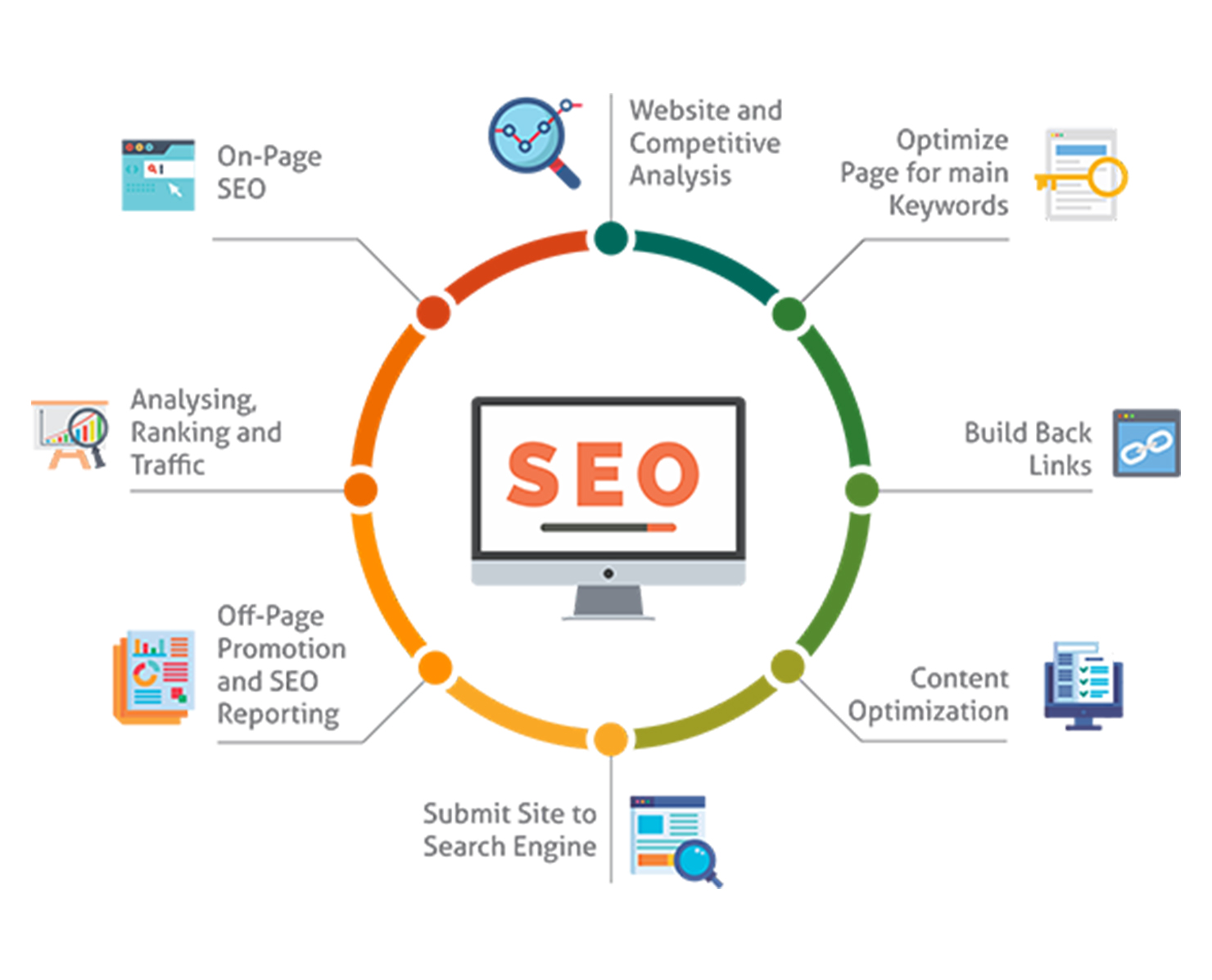In the fast-paced world of digital marketing, staying ahead of SEO trends is crucial to maintaining visibility and driving traffic. As we move into 2025, SEO continues to evolve, bringing new strategies and technologies that businesses must leverage to remain competitive. The landscape is becoming more complex, with increased reliance on artificial intelligence (AI), voice search, mobile-first indexing, and user experience optimization. Whether you are running a startup or working on expanding your online business, understanding the emerging SEO trends is essential for maximizing digital marketing efforts.
As algorithms become smarter and user expectations grow, optimizing your digital presence is no longer just about keyword optimization. Instead, it’s about creating a holistic, engaging experience that integrates AI, user-centric content, and more advanced SEO strategies. This article explores the top SEO trends shaping digital marketing in 2025 and how businesses can leverage these changes for growth.
1. AI and Automation in SEO
One of the most significant trends in SEO for 2025 is the integration of AI and automation. AI tools, including machine learning and natural language processing, are transforming the way businesses approach SEO. Google’s RankBrain, for example, has been a key player in shifting the focus from exact-match keywords to more intent-based search queries. In 2025, AI will continue to evolve, impacting everything from keyword research to content optimization and even technical SEO.
AI-driven tools can analyze large datasets, predict trends, and automate tasks like keyword tracking, competitor analysis, and content creation. By leveraging AI, businesses can significantly enhance their digital marketing campaigns. For instance, AI-based tools can now help identify long-tail keywords that are highly specific to user queries and predict upcoming trends, making it easier for businesses to stay ahead of competitors.
Automating tasks such as content optimization and site audits can save businesses time and resources, enabling them to focus on more strategic aspects of their digital presence. AI in business operations will continue to play a central role in helping businesses scale their SEO efforts and meet user needs more effectively.

2. Voice Search and Conversational AI
The rise of voice search is changing the way people interact with search engines. With the proliferation of voice-activated devices like Google Assistant, Amazon Alexa, and Apple Siri, voice search queries are becoming an integral part of SEO strategies. As users rely more on voice commands, the way they phrase their queries is changing. Instead of typing short, fragmented keywords, voice searches are typically longer and more conversational.
To stay competitive in 2025, businesses must adapt their SEO strategies for voice search optimization. This includes targeting long-tail keywords and incorporating natural, conversational language into content. Phrases like “best pizza near me” or “how do I start a small business?” are common in voice searches, and optimizing your content for these types of queries is essential.
For businesses looking to stay at the forefront of e-commerce innovations, integrating voice search into their strategy can drive targeted, local traffic. Local SEO, in particular, benefits from voice search, as users often rely on voice-activated devices to find nearby products or services. Optimizing for these searches ensures that businesses remain visible in local results, capturing a valuable segment of the audience.
3. User Experience (UX) and Core Web Vitals
In 2025, user experience (UX) continues to be a critical ranking factor for SEO. Google’s introduction of Core Web Vitals in 2021 highlighted the importance of page experience in SEO rankings. These metrics assess how well a webpage performs in terms of load speed, interactivity, and visual stability. As search engines increasingly prioritize user experience, it’s vital for businesses to focus on these factors to maintain high rankings.
Core Web Vitals measure three key areas:
- Largest Contentful Paint (LCP): How long it takes for the main content of a page to load.
- First Input Delay (FID): The time it takes for the page to respond when a user interacts with it.
- Cumulative Layout Shift (CLS): The visual stability of a page as it loads.
To optimize for Core Web Vitals, businesses should focus on improving website load times, optimizing images, leveraging browser caching, and ensuring mobile-friendliness. The user experience directly influences engagement, bounce rates, and conversions, making UX optimization a top priority for SEO in 2025.
4. Mobile-First Indexing and Optimization
As mobile traffic continues to dominate, Google has fully embraced mobile-first indexing, meaning the mobile version of your website is prioritized over the desktop version when ranking. With over 50% of global website traffic coming from mobile devices, it’s no surprise that Google considers mobile-friendliness as a critical ranking factor.
For 2025, businesses must ensure that their websites are fully optimized for mobile devices. This includes responsive design, fast loading times, easy navigation, and a mobile-friendly checkout process for e-commerce businesses. Since Google predominantly uses the mobile version of a site for indexing and ranking, businesses that fail to optimize for mobile risk falling behind competitors who prioritize this aspect of SEO.
Incorporating sustainable businesses and ensuring a seamless mobile experience for users can help businesses not only rank better but also engage more customers.
5. Featured Snippets and Structured Data
Featured snippets are becoming increasingly important for SEO rankings in 2025. These are the boxes that appear at the top of some search results, providing concise answers to user queries. To secure a featured snippet, businesses must structure their content in a way that directly answers common questions related to their industry.
One way to improve your chances of landing a featured snippet is by using structured data or schema markup. Schema markup is code added to a website that helps search engines better understand the content of your pages. This can lead to richer search results, such as displaying ratings, reviews, and event information directly on search engine results pages (SERPs).
Incorporating structured data helps search engines categorize and rank content more accurately, increasing visibility in social media marketing and other platforms. By optimizing content for featured snippets and using schema markup, businesses can increase their chances of appearing in the coveted “position zero” on search results.
6. Personalization and Search Intent
Search engines are becoming increasingly adept at understanding search intent, focusing less on keyword matches and more on the context behind a query. In 2025, businesses will need to create personalized content that aligns with the specific intent of their target audience. Whether a user is searching for information, comparing products, or ready to make a purchase, tailoring content to match search intent will be crucial for SEO success.
For businesses, this means understanding the different types of search intent—informational, transactional, and navigational—and creating content that satisfies each type. For instance, an informational search might require a detailed blog post, while a transactional search could benefit from an optimized product page or sales offer.
Leveraging personalization tools can enhance the user experience and increase engagement, driving more targeted traffic to your website. Personalization also ties into broader business trends, as customer-centric strategies continue to dominate digital marketing.
7. Video SEO and Visual Search
As video content becomes increasingly popular, video SEO is expected to grow significantly in 2025. Optimizing video content for search engines can increase visibility on platforms like YouTube and Google, driving more traffic to your website. In addition to video optimization, visual search is also becoming more prominent, allowing users to search using images instead of keywords.
To optimize for video SEO, businesses should focus on optimizing video titles, descriptions, and tags with relevant keywords. Additionally, incorporating content marketing strategies that include video content can boost your brand’s visibility and engagement. Visual search tools, such as Pinterest Lens and Google Lens, are gaining traction and provide new opportunities for businesses to appear in search results based on visual queries.
Conclusion
SEO in 2025 is more dynamic and multifaceted than ever before. As search engines continue to evolve, businesses must adapt to new technologies, strategies, and user behaviors. From AI and automation to voice search and mobile-first indexing, the future of SEO is about providing value, improving user experience, and embracing innovation.
To stay ahead of the competition, businesses must focus on sustainable business practices, integrate advanced SEO techniques, and adapt to the ever-changing landscape of digital marketing. By focusing on personalization, optimizing for voice and video search, and enhancing user experience, businesses can ensure their digital presence thrives in 2025 and beyond.

